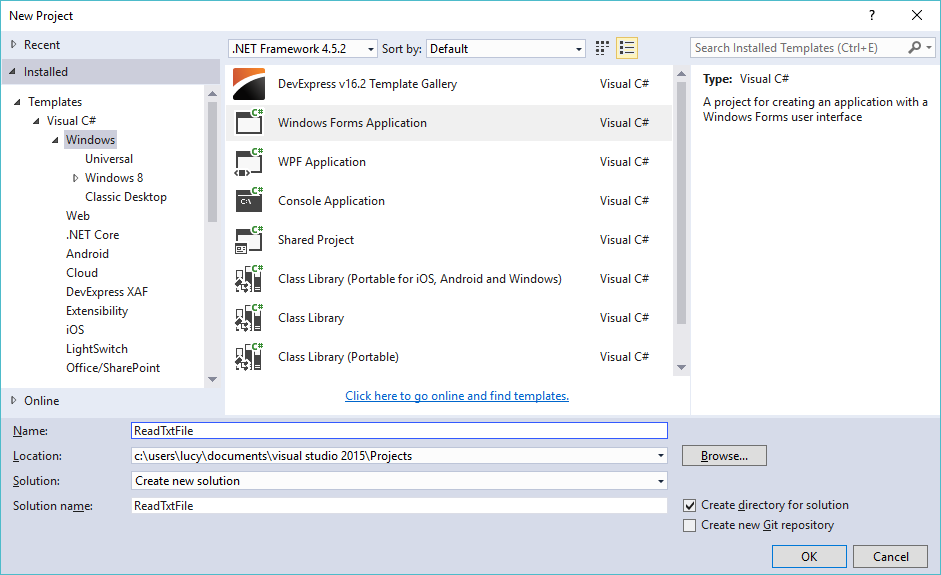

- #Windows forms application txt write how to#
- #Windows forms application txt write software#
- #Windows forms application txt write professional#
Enabling Drag-and-Drop in Forms and ControlsĪll. Things were much easier for Visual Basic developers and you'll still find that model at the root of the. Implementing drag-and-drop, though, remained a sort of nightmare for most programmers. The advent of OLE made the drag-and-drop transition from messages to functions and generalized the format of the data being moved.
#Windows forms application txt write software#
Drag-and-drop has existed for a long time in Windows and had its first fully message-based SDK available with Windows for Workgroups in an earlier software era. It makes transferring data from one control to the next, and from and to other applications and to the Windows shell itself, into a straightforward activity. The first step to enable drag-and-drop in a form or control is setting the AllowDrop property to True.Īs a matter of fact, drag-and-drop greatly simplifies how people use virtually any application. Yet drag-and-drop is a feature that, if missing, users promptly miss and are quick to add to the wish list for the next upgrade. Drag-and-drop is not the solution to any core business issues and doesn't add any new functionality to the application. Sure, drag-and-drop doesn't make your application run faster, nor does it add anything to the core business of the application. Notable examples are the TextBox and the PictureBox controls.ĭrag-and-drop is one of those programming features rarely listed in the user requirements document because it is perceived as secondary and minor.
#Windows forms application txt write how to#
This article demonstrates how to import files from the Windows shell and how to enhance some UI controls to make them accept input via drag-and-drop. By accomplishing a few mandatory steps and working with the information available in the event arguments, you can easily facilitate dragging and dropping files, text, and any other sort of serializable data objects. In Windows Forms applications, drag-and-drop operations consist mostly of handling a series of events.
#Windows forms application txt write professional#
This can be beneficial to other community members reading this thread.If you want to capture your users' imaginations, enable drag-and-drop.ĭrag-and-drop doesn't fulfill requirements, but it contributes to making your application appear more professional and easy to use. Please remember to click "Mark as Answer" the responses that resolved your issue, and to click "Unmark as Answer" if not. Refer: How to: Write to a Text File (C# Programming Guide) If the line doesn't contain the word 'Second', write the line to the file. NOTE: do not use FileStream for text files because it writes bytes, but StreamWriter IDisposable.Dispose on the stream object. The using statement automatically flushes AND CLOSES the stream and calls System.IO.StreamWriter class: // Example #3: Write only some strings in an array to a file. You do NOT need to call Flush() or text) WriteAllText creates a file, writes the specified string to the file, "a class defines the data and behavior of the data type. String text = "A class is the most powerful data type in C#. Example #2: Write one string to a text file.

You do NOT need to call Flush() or lines) WriteAllLines creates a file, writes a collection of strings to the file, Create a string array that consists of three lines.

System.IO.File class: // Example #1: Write an array of strings to a file.


 0 kommentar(er)
0 kommentar(er)
